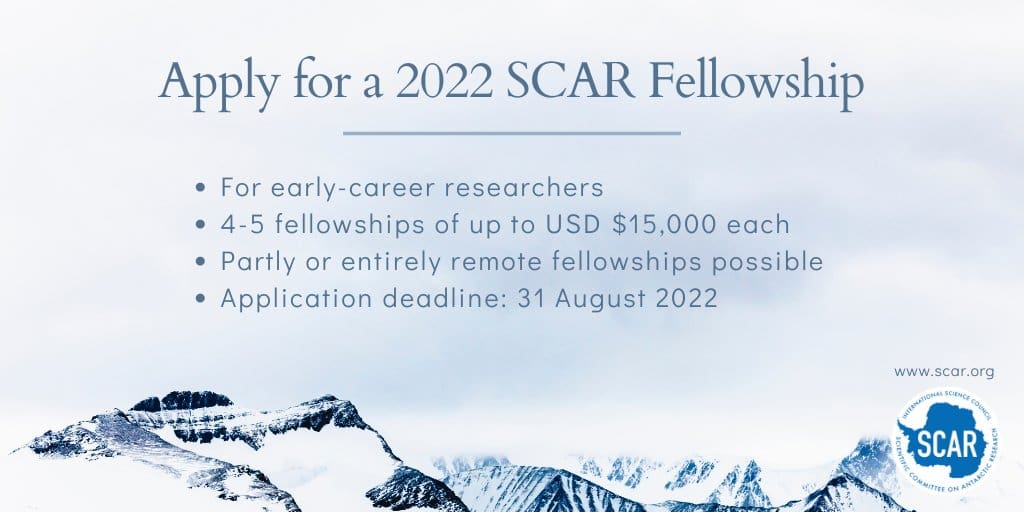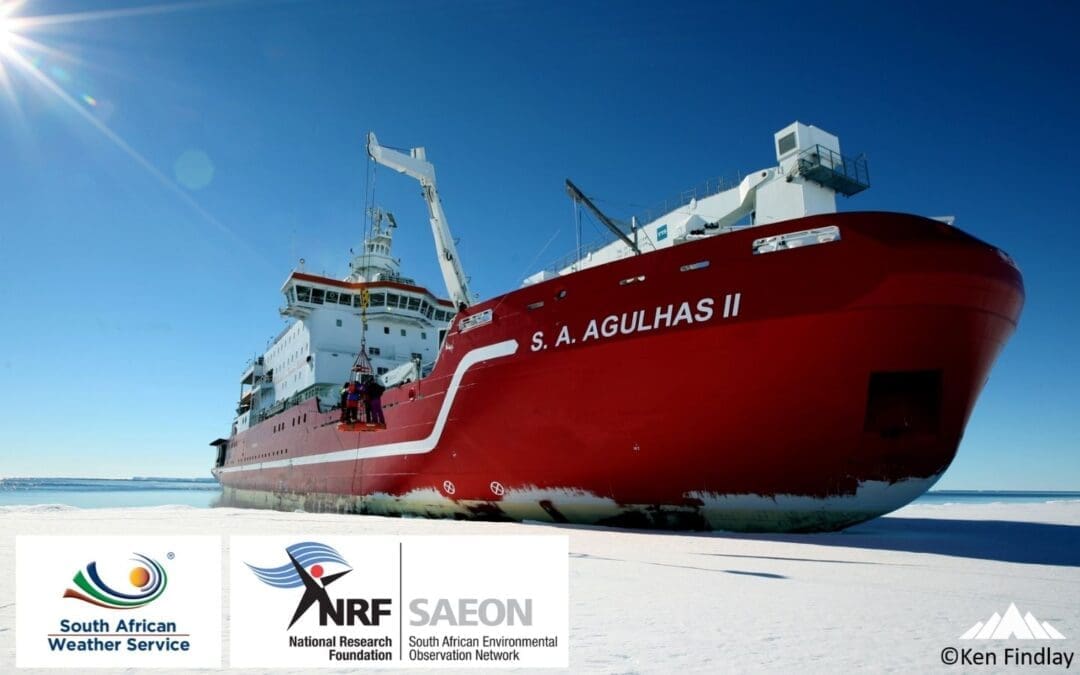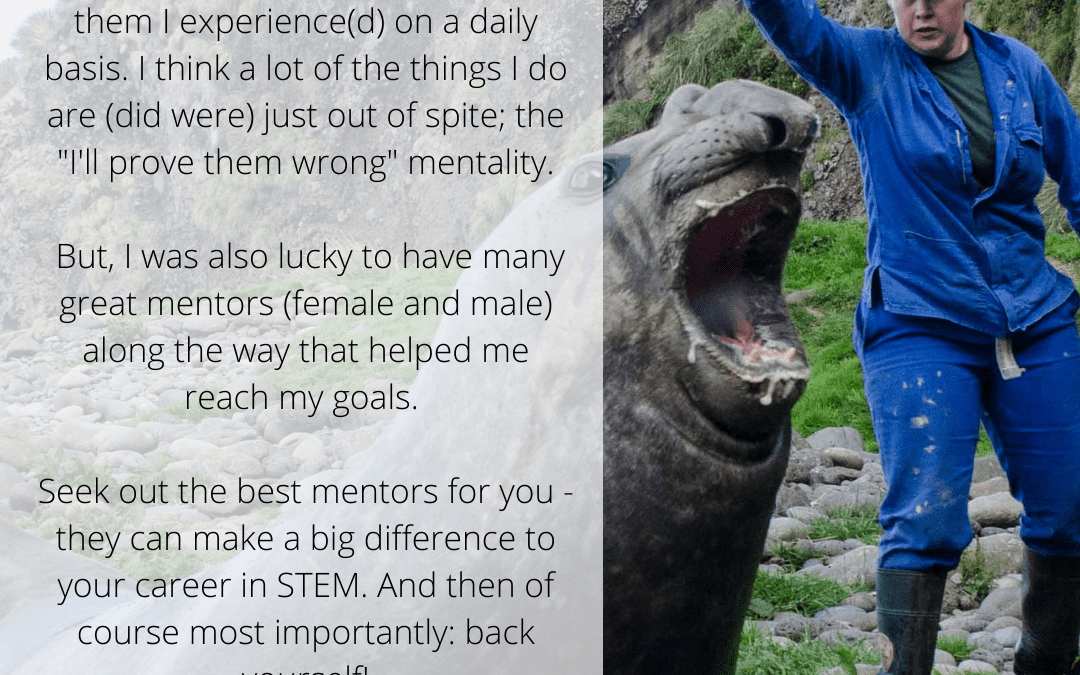
by Ria Olivier | Mar 23, 2022 | Antarctica, Gough Island, Important Dates, International Days, Marion Island, Meteorology, Research, SA Agulhas II, SANAE, SANAP
Meteorological and oceanographic (met-ocean) data supplied by the South African Weather Service played an integral part in the recent and successful Endurance 22 expedition.
by Marc de Vos, Senior Scientist, South African Weather Service (SAWS) Marine Research Unit.
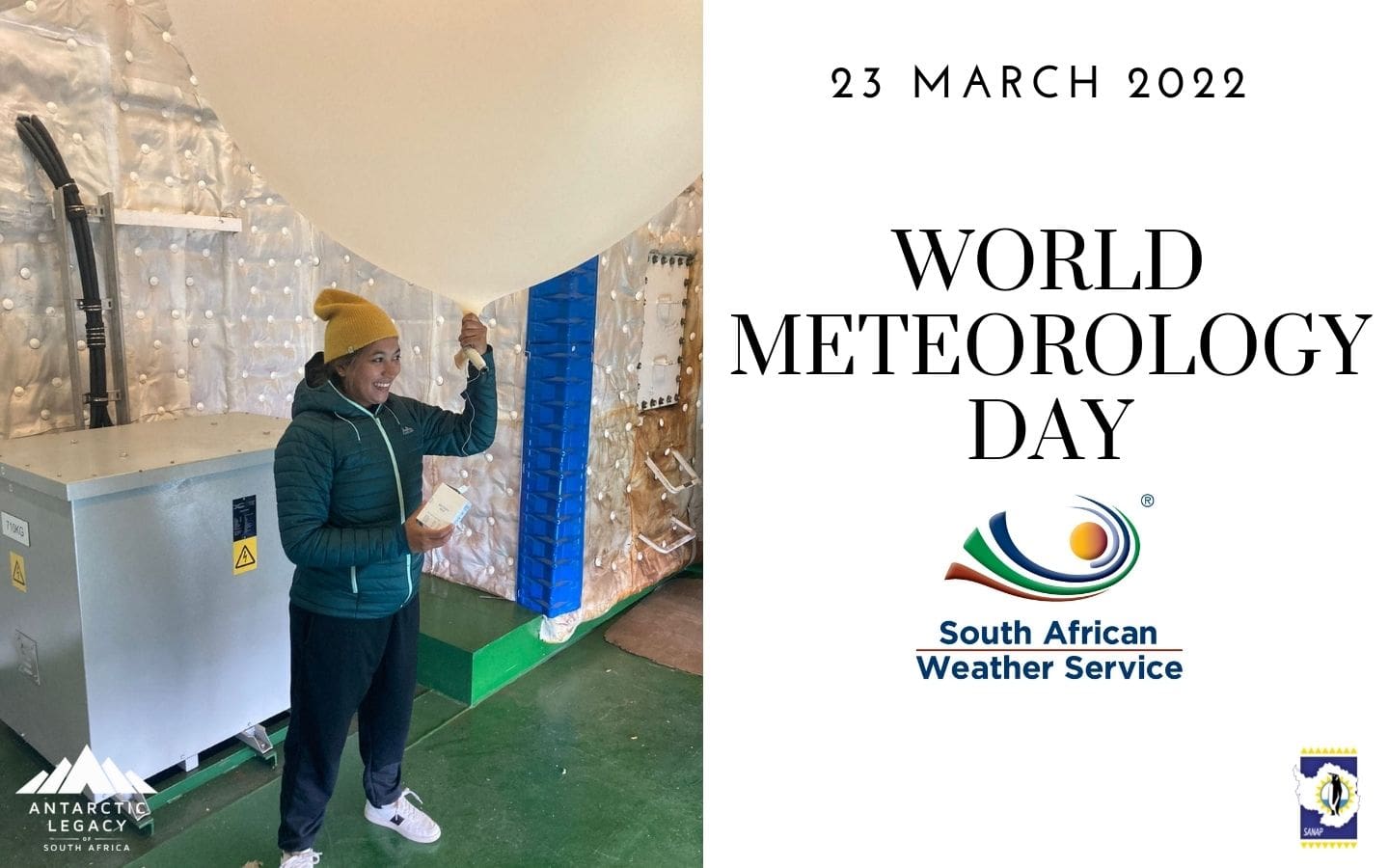
Carla-Louise Ramjukadh preparing to deploy a radiosonde (weather balloon). Find out more about a radiosonde – check out this video (click here).
The Endurance 22 expedition has returned from the Weddell Sea aboard the S.A. Agulhas II, having successfully located and surveyed the wreck of Sir Ernest Shackleton’s legendary Endurance. For the safety of any maritime activity, information about the environmental conditions is important. Mariners constantly evaluate factors such as sea-state (the combined effect of wind and waves on the surface of the ocean), tides, and surface currents, all of which affect the navigability of the vessel. For highly specialised undertakings, this requirement becomes particularly acute. To assist, the South African Weather Service (SAWS) sent two scientists from its Marine Research Unit to provide meteorological and oceanographic (met-ocean) support to the expedition.
The first challenge associated with a voyage to the Weddell Sea is the transit from Cape Town, through the south Atlantic and the Southern Ocean. These ocean areas are characterised by a steady procession of midlatitude cyclones; storms that might be up to 2,000 km in diameter, bringing strong winds, high seas, and powerful underlying ocean currents. These are the phenomena behind the nicknames for the latitudinal bands through which the S.A. Agulhas II needed to transit; the “Roaring Forties”, “Furious Fifties” and “Screaming Sixties”. In particular, the Southern Ocean is widely regarded as the roughest on the planet. This is largely due to the lack of land boundaries to break the acceleration of the ocean’s surface by the wind. Careful planning is required to thread a route through the storms, themselves moving and morphing, and the high seas which lag behind them. This process (sometimes more of an art!) is a fine balance between speed, efficiency, and risk-limitation, and the SAWS team on board worked closely with the ship’s officers to determine the most suitable route to the search area. It is a challenging but exciting task. We use a mix of data from numerical models, free-drifting ocean instruments and satellites, and algorithms that assist to process these data. Ultimately, the experience of the ship’s officers and the exchange of information between scientists and navigators remain key in balancing the myriad of competing factors.
Upon arrival in the sea ice, different challenges arise. The sea ice might be up to 4 metres thick, with an average of around 1.5 m, and covers the search area entirely. A process of constant ice-breaking, repositioning, drifting with the ice, and deploying the autonomous underwater vehicles (AUVs) to scan the sea bed begins (read more about these vehicles here). Whilst surveying the ship drifts with the ice, but the search area on the sea bed does not, and therefore it is vital to anticipate wind and tidal shifts such that the drift can be predicted and deployment of the AUVs planned accordingly. SAWS scientists worked closely to support the highly skilled sea ice specialists from Drift + Noise Polar Services to provide supplementary information of this nature.
Prediction and analysis are not the only tasks for met-ocean scientists on board. Throughout the voyage, regular weather/ocean observations were performed and a range of meteorological instruments was deployed. These included Argo floats (see image above), surface velocity program (SVP) weather buoys, Sofar Ocean Wave Spotter buoys, and atmospheric radiosondes. These instruments drift freely in the ocean (or rise through the atmosphere, in the case of the radiosonde), collecting and transmitting data in an-otherwise data sparse region. Data are processed and fed to global numerical weather/ocean prediction models to improve their predictions via a process called data assimilation. Generally, the more data supplied to models, the better their performance. In many cases, measurements from these instruments are also available in real-time, providing an excellent means to onboard scientists by which to “ground-truth” ocean/weather predictions. Finally, data are archived in climate databases, for future use by climate change researchers.
Being able to play a small role in the success of Endurance 22 feels like a career-defining moment. A historic event of this scale, having taken place in so beautiful and dramatic an environment, is a uniquely rewarding experience. I am humbled to have been asked to participate and immensely grateful to the leadership of the expedition. I am also thankful to fellow expedition members and particularly my on-board colleague, Carla-Louise Ramjukadh, along with shore-based colleagues Tania Daniels, Michael Barnes and Tammy Morris for their tireless support behind the scenes. Even in the modern world, where almost everything can be navigated digitally, the fundamental effects of meteorology and oceanography continue to affect every human on the planet. Young people looking for where to apply their skills and ambitions should be encouraged by this, and the incredible opportunities which our science often provides.
Text by Marc de Vos, Senior Scientist, South African Weather Service (SAWS) Marine Research Unit. Edited by Anche Louw, Antarctic Legacy of South Africa, 23 March 2022

by Ria Olivier | Mar 9, 2022 | Announcement, Antarctica, Current Event, News, Research, SA Agulhas II
Sir Ernest Shackleton’s ship, The Endurance was crushed and sank to the ocean floor, in the Weddell Sea, Antarctica (1915). Read more here.

The Endurance was found at a depth of 3008 meters in the Weddell Sea, Antarctica. Image Credit: Falklands Maritime Heritage Trust/National Geographic
The South African (Department of Forestry, Fisheries and the Environment) owned research and supply vessel, the S.A. Agulhas II (managed and operated by African Marine Solutions), is currently in the Weddell Sea, chartered by the Falklands Maritime Heritage Trust to locate the sunken ship of Shackleton. The Endurance 22 Expedition made an official press release earlier today, announcing that The Endurance has been found and successfully surveyed and filmed for research purposes. Read the press release on Endurance 22 here.
Congratulations to all the different research teams on board and to the captain of the vessel, Captain Knowledge Bengu, and his crew that ensured the safety of all passengers.
WATCH the footage here!
After the unsuccessful Weddell Sea Expedition in 2019, these are the proud individuals (including Captain Knowledge Bengu, Ice Pilot Captain Freddie Ligthelm and many S.A. Agulhas II crew members) that were able to join this second and very successful hunt for Shackleton’s Endurance.

L-R: James-John Matthee, John Shears, Annie Bekker, Pierre Le Gall, Mensun Bound, Chad Bonin. Image Credit: Chad Bonin.
Before heading to Cape Town, with only 3 days left of the original charter time, the S.A. Agulhas II is now on her way to South Georgia, the burial place of Sir Ernest Henry Shackleton.


LIVE Interview from the S.A. Agulhas II – Captain Knowledge Bengu
Anche Louw, Antarctic Legacy of South Africa, 09 March 2022

by Ria Olivier | Mar 8, 2022 | Engineering, Genomics, International Days, News, Oceanography, Research, SA Agulhas II, Southern Ocean, STEM, sub-Antarctic, Women in Science
The theme for this year’s International Women’s Day is “Break the Bias”.

This year we are featuring three inspiring women within the South African National Antarctic Programme. They are leaders in their fields and represent South Africa on an international level.
 Prof Annie Bekker – Stellenbosch University
Prof Annie Bekker – Stellenbosch University
Professor in Engineering, Director of the Sound & Vibration Research Group, and currently on the international Endurance 22 expedition (Antarctica).
“My job is about applying maths and science to technology… discovering and searching for new things. It is sometimes difficult, it takes long hours, breakthroughs can be incremental… and many times the belief, momentum, and enthusiasm for success have to come from within myself… Today, I love my job and the hard work to this point is absolutely worth it. I could not get here without encouragement, love, and mentorship in key moments. I cannot continue without the support of my family, the example of my colleagues, or the curiosity of my students – their excellence and hunger for their own new frontiers of discovery.
This is your life. Invest in your education. Believe in yourself, try, try again, never give up. Be hungry to learn. Sharpen your skills. Absorb all that is positive around you. Find mentors. Accept responsibility. Rebound from failure. Celebrate success. Be brave. Dream”.
Check out the Sound & Vibraton Research Group website: svrg.sun.ac.za.
Read more about Annie’s work and adventures here.
 Prof Isabelle Ansorge – University of Cape Town
Prof Isabelle Ansorge – University of Cape Town
Head of the Oceanography Department at UCT and mastermind behind South Africa’s first class afloat – SEAmester.
Isabelle Ansorge is an observational oceanographer, Professor, and first female Head of the Oceanography Department at the University of Cape Town. Having built an observational oceanography career both nationally and internationally, Prof. Ansorge’s interests lie in Indian, Atlantic, and Southern Ocean dynamics that include Southern Ocean eddy transports of heat and salt, frontal dynamics, and variability in the Antarctic Circumpolar Current and its effects on Subantarctic Islands such as Marion Island. Another passion of Isabelle’s is the shipboard training of postgraduate students from all over South Africa and she is the mastermind behind the SEAmester Floating University programme. SEAmester provides an incredible teaching and research platform for South African early-career scientists and lecturers alike. Prof. Ansorge’s list of affiliations is a testament to her extensive experience in the field including being a committee member of the Scientific Committee on Antarctic Research (SCAR), as a member of the start-up committee for the Southern Ocean Observing System (SOOS), as an Executive Bureau Member of the International Union for Geodesy and Geophysics (IUGG) and formally the vice-president of the International Association for Physical Sciences of the Oceans (IAPSO).
Check out the SEAmester website: seamester.co.za.
Read more about Isabelle here.
 Prof Bettine van Vuuren – University of Johannesburg
Prof Bettine van Vuuren – University of Johannesburg
Professor of Zoology, Director of the Centre for Ecological Genomics and Wildlife Conservation, and Chair of the South African Committee for the Scientific Committee on Antarctic Research (SANC for SCAR).
“The first thing to say is that I believe there is nothing that any person can’t do if they apply their mind (and time) to it. We often set our own ceilings based on general beliefs that society or others impose on us, and it is crucial that we break through these (non-real) boundaries. STEM fields are a case in hand. This is especially true for women, who traditionally were seen as homemakers or child-carers. In STEM specifically, fields such as mathematics, physics, and engineering, and traditionally more field-based disciplines such as zoology, botany, or oceanography, are seen as more suited to men (either because women were not traditionally considered as analytically strong, capable to work in the field, or for that matter, be away from home for any period of time). It is critical that any person (both men and women) should carefully consider what they enjoy, what their specific strengths are (be that a STEM career for a woman, or as a childcarer/homemaker for a man), and then pursue that with all their strength and passion. Personally, I was initially directed into a field that I had no interest in (because I could not answer questions asked re where I would work if my husband lived in a small town), and from a personal perspective I strongly urge and support women that want to step out of the usual/ typical / what is expected from you by society and follow what they are passionate about”.
Follow Bettine on Twitter (Click here).
You can also visit her website: molzoolab.co.za.
Meet the SANC for SCAR committee here.
Read more about Bettine here.
Image of Prof Bekker supplied by: James-John Matthee.
Anche Louw, Antarctic Legacy of South Africa, 08 March 2022

by Ria Olivier | Mar 2, 2022 | Announcement, Antarctica, COMNAP, Fellowship, IAATO, News, Research, SCAR, Southern Ocean, STEM
Attention all early-career researchers (ECRs).
Fellowship opportunities are now available at three Antarctic organisations.
- The Council of Managers of National Antarctic Programs (COMNAP) – offering one fellowship with funding of up to USD $15,000.
- The International Association of Antarctica Tour Operators (IAATO) – offering one fellowship with funding of up to USD $15,000.
- The Scientific Committee on Antarctic Research (SCAR) – offering four or five fellowships with funding of up to USD $15,000 each.
COMNAP, IAATO, and SCAR encourage all talented early-career researchers, scientists, engineers, environmental managers, and those in other early-career professions to apply for these fellowships.
“The purpose is to strengthen international capacity and cooperation in fields such as climate, biodiversity, conservation, humanities and astrophysics research by providing annual funding opportunities” (as per the fellowship announcement).
Application Deadlines:
- COMNAP – 30 June 2022
- IAATO – 30 June 2022
- SCAR – 31 August 2022
For more details: Click here.
Download the relevant information here.
Anche Louw, Antarctic Legacy of South Africa, 02 March 2022

by Ria Olivier | Feb 16, 2022 | Current Event, Meteorology, News, Oceanography, Research, SA Agulhas II, Science
The South African Weather Service (SAWS) has two Marine Scientists (Marc De Vos and Carla Ramjukadh) onboard the S.A. Agulhas II, during the Endurance 22 Expedition. They are responsible for weather forecasts and meteorological data requirements from the various groups onboard the vessel.
“The SA Agulhas II vessel is able to accurately measure atmospheric parameters throughout the Endurance22 expedition. These measurements are supplemented with visual observations (such as weather, clouds, and sea-ice) done manually by the onboard meteorologist, giving a more complete picture of current weather conditions.” (www.endurance 22.org)
Read more about the responsibilities of SAWS onboard this cruise – Click here.
Also, check out the video below – Interview with Marc De Vos and Carla Ramjukadh. These live interviews give an insight into what is currently happening onboard the vessel. Schools all over the world are able to register and take part in live interaction with the various science and other groups onboard. Read more here.
The SAWS team will also contribute to the ARGO research programme, which involves collecting and sharing data from inside the ocean by deploying technologically advanced buoys.
For more information on the role of SAWS (and the various instruments that are used during this cruise) and how schools in South Africa are impacted and involved in scientific cruises, check out the video below: Interview with Dr. Tamaryn Morris, a physical oceanographer and Senior Manager for Marine (South African Weather Service), and Thomas Mtontsi, the Science Engagement Officer at the South African Environmental Observation Network (SAEON).
Anche Louw, Antarctic Legacy of South Africa, 16 February 2022

by Ria Olivier | Feb 11, 2022 | Marion Island, Meteorology, Not-Assigned, Oceanography, Research, SA Agulhas II, SANAP Student, Science, Southern Ocean, STEM, sub-Antarctic, Women in Science
In honour of every woman and girl entering the field of science within the Antarctic, sub-Antarctic and Southern Ocean.
Be inspired by the Women in Antarctic, sub-Antarctic and Southern Ocean Science.
Be inspired by the girls taking Marine Sciences as a subject in high school laying the path for their future in science.
Read more about the new SA subject – Marine Sciences: https://bit.ly/3gF9WN7
Anche Louw, Antarctic Legacy of South Africa, 11 February 2022
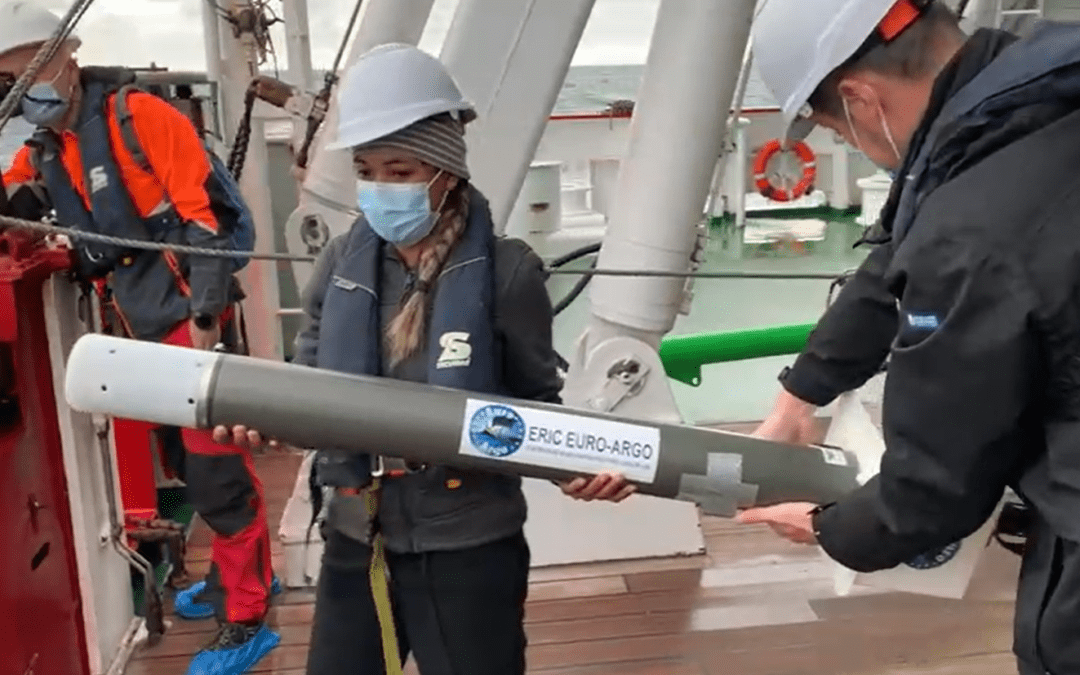


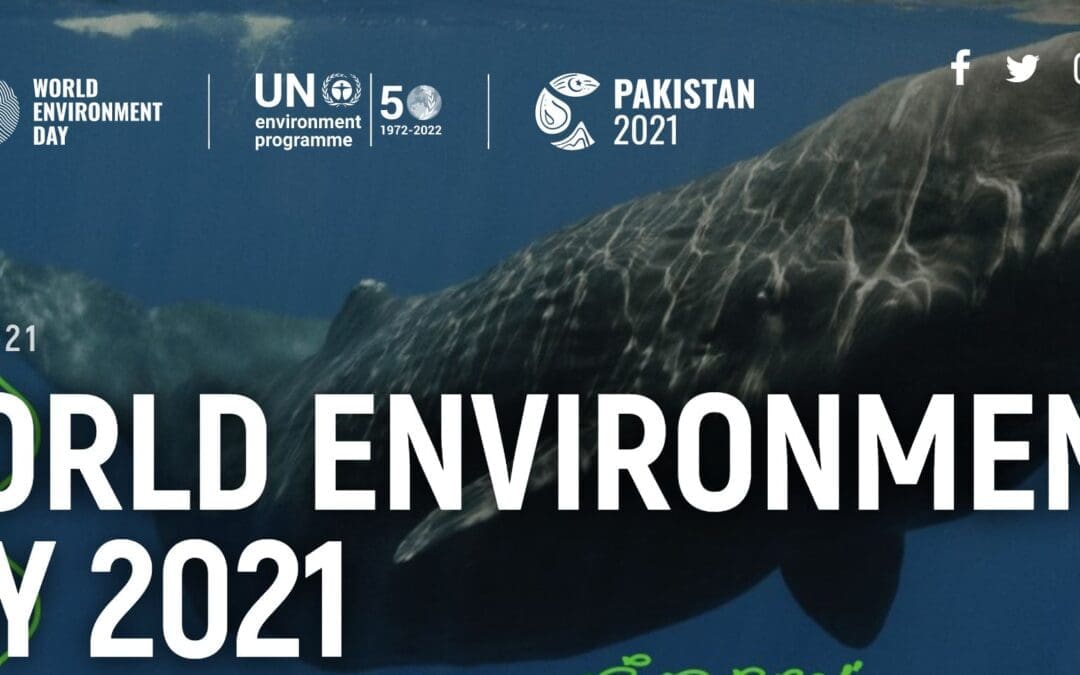
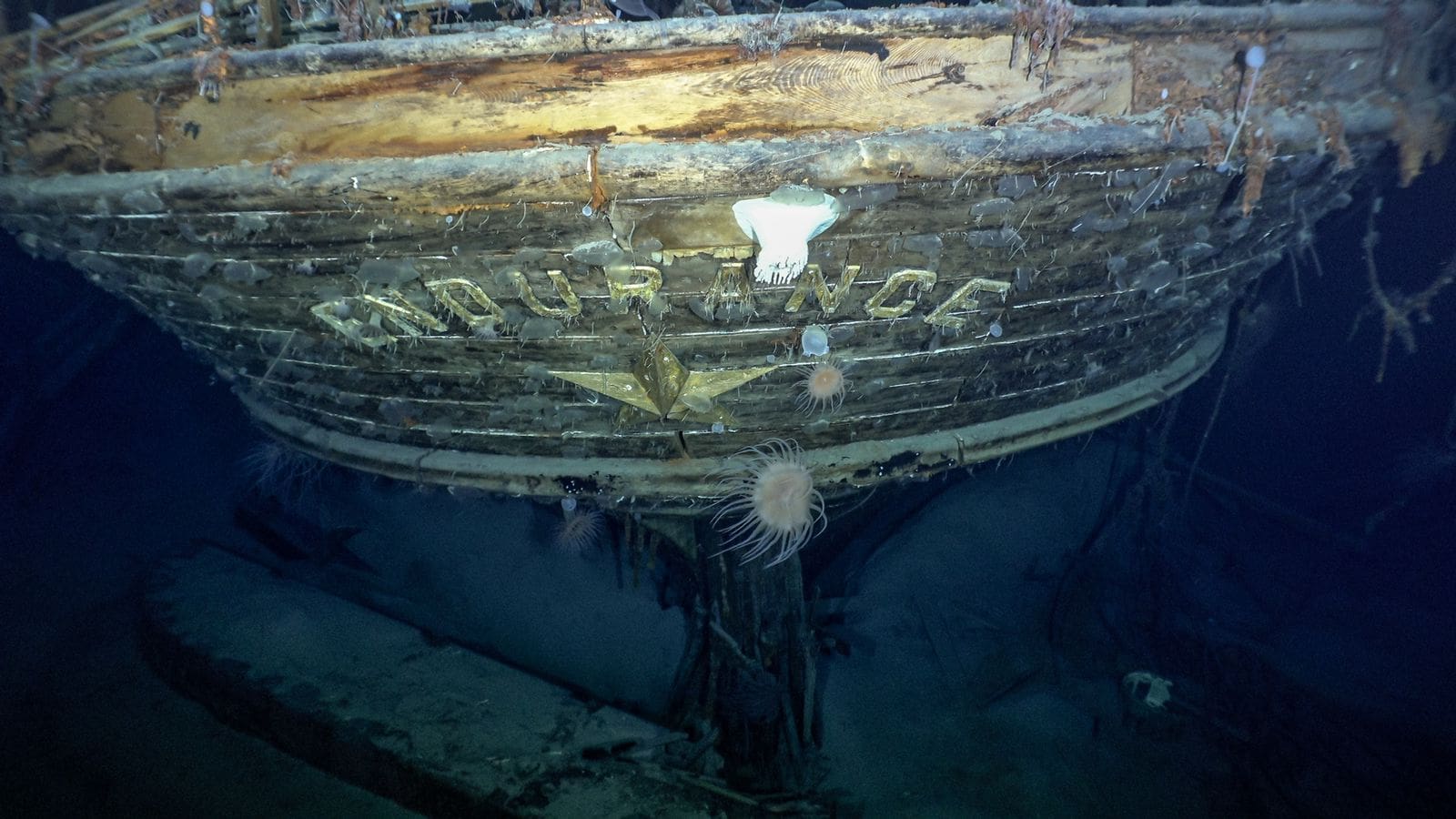
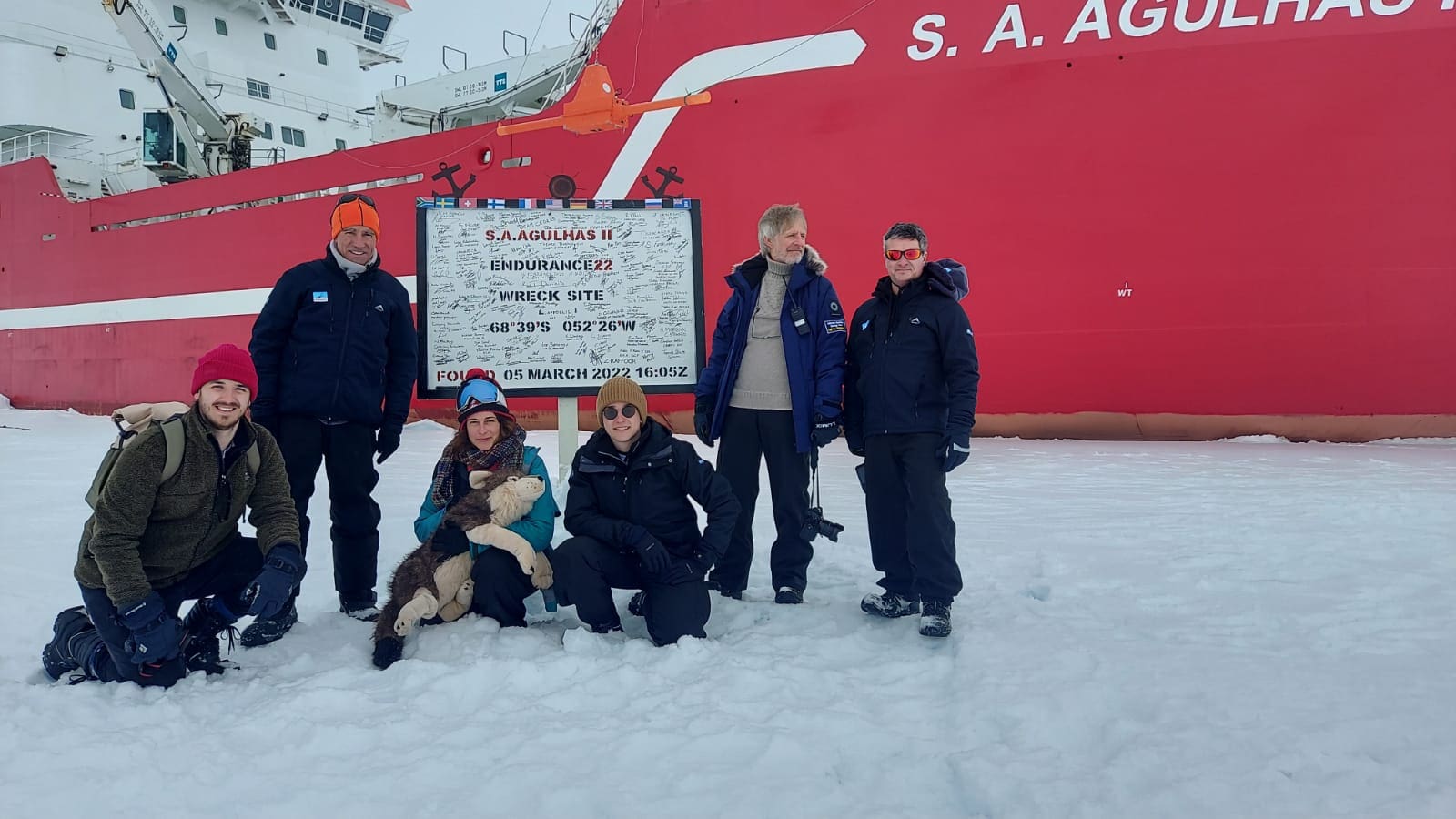



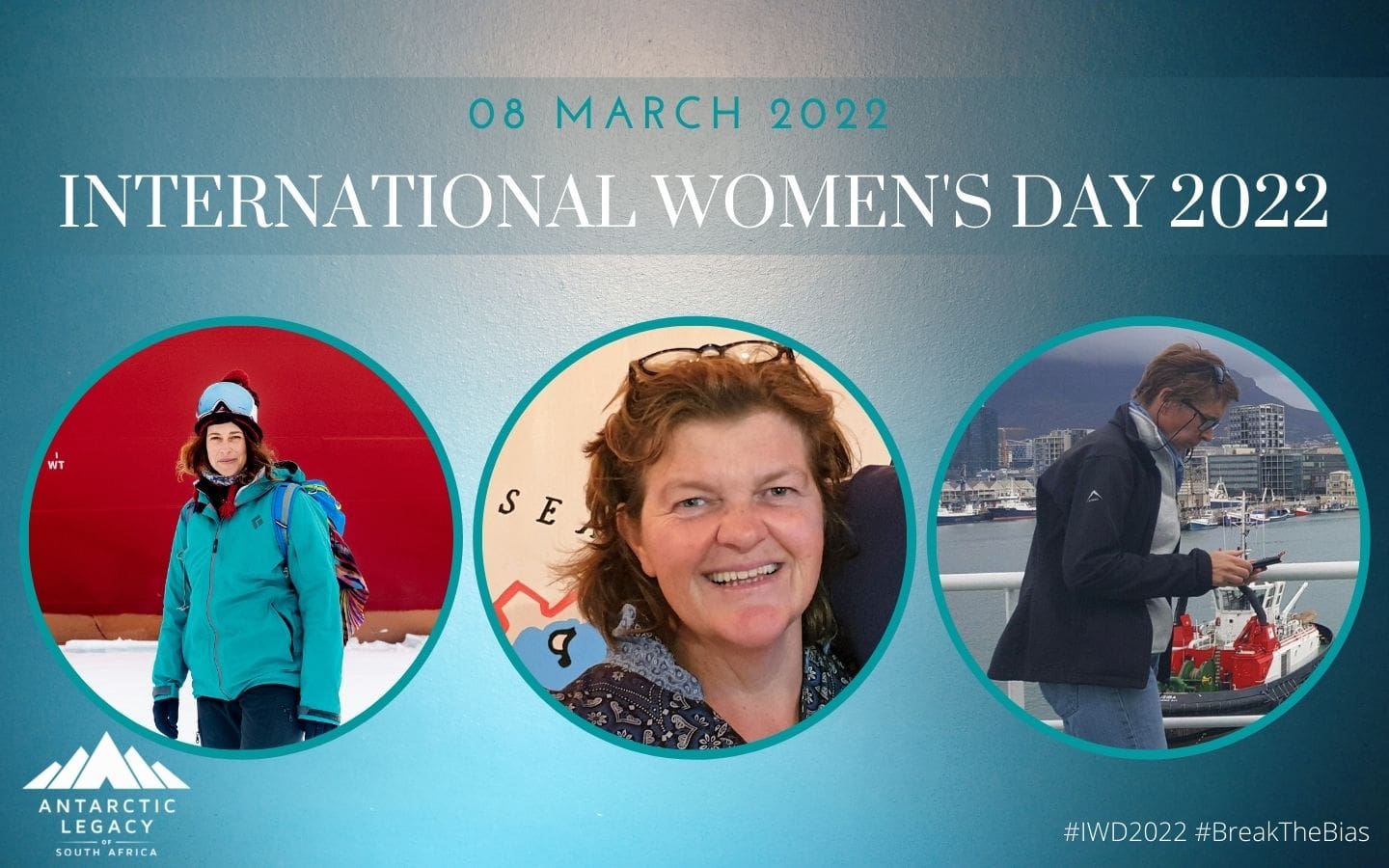
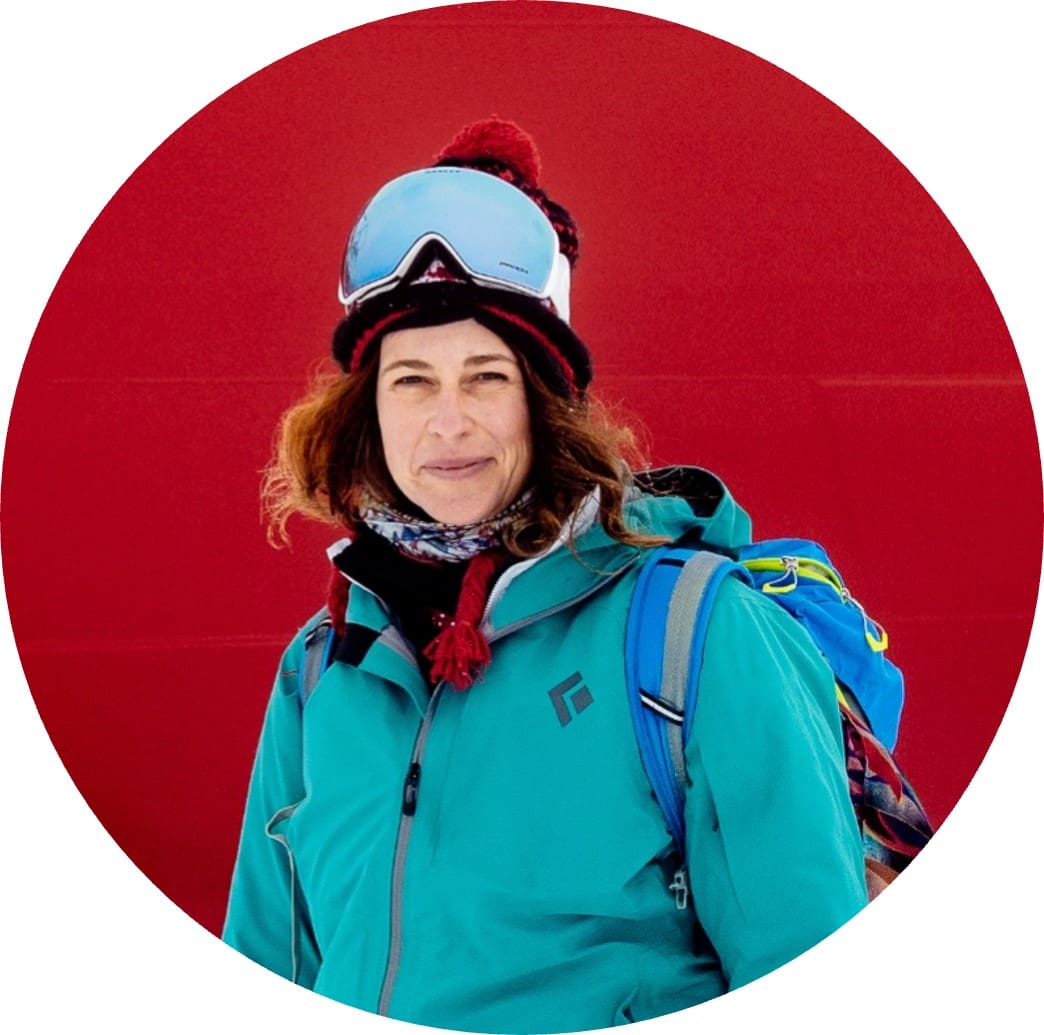 Prof Annie Bekker – Stellenbosch University
Prof Annie Bekker – Stellenbosch University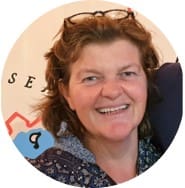 Prof Isabelle Ansorge – University of Cape Town
Prof Isabelle Ansorge – University of Cape Town